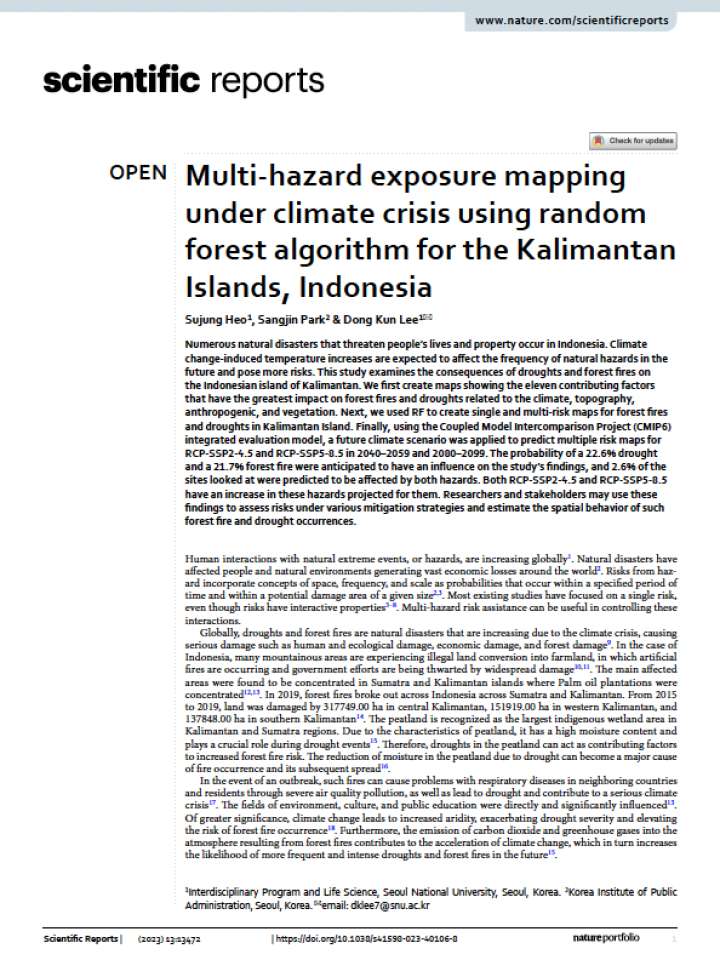Multi-hazard exposure mapping under climate crisis using random forest algorithm for the Kalimantan Islands, Indonesia
This study examines the consequences of droughts and forest fires on the Indonesian island of Kalimantan. The researchers first create maps showing the eleven contributing factors that have the greatest impact on forest fires and droughts related to the climate, topography, anthropogenic, and vegetation. Numerous natural disasters that threaten people’s lives and property occur in Indonesia. Climate change-induced temperature increases are expected to affect the frequency of natural hazards in the future and pose more risks.
The study’s findings were predicted to be impacted by the risks of a 22.6% drought and a 21.7% forest fire, and 2.6% of the locations examined were predicted to be affected by both hazards. This study suggests that past hazard risk management approaches need to be reconsidered to prepare for the rapid transformation of ecosystem functions and structures due to increasing hazards.
Explore further

